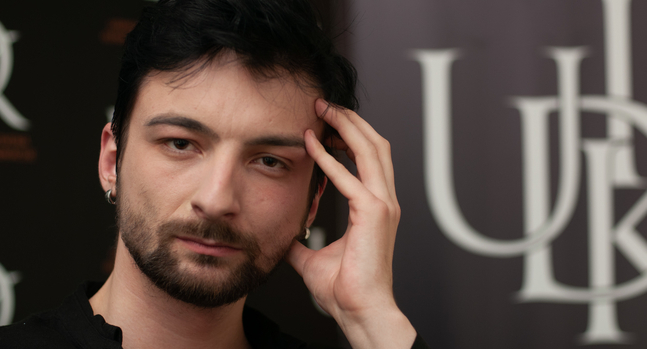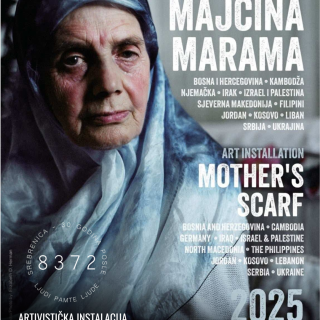Imagine that there was a memorial plaque on the wall of the former police station in the regional centre of Bosnia Posavina region. A memorial plaque with an inscription indicating that Bosniaks and Croats from Brčko were tortured in the building, and especially in the room number thirteen. Just because they had different names, some of them were killed at the police station. Five of them were killed. Others were subject to interrogations, ill-treatment, abuse and forced labour. Only those persons that were important were detained. Better known, more educated and more influential persons.[1] Let us be even more truthful. Imagine that there was by chance a memorial site in front of the sports hall Partizan. With a text indicating that a member of the Territorial Defence of Bosnian Serbs, Ranko Češić, tortured non-Serbs in that location, at the sports hall of their youth. The convicted war criminal admitted before the Hague Tribunal that he killed a total of ten persons. He was convicted to an 18-year prison sentence.[2]
A memorial dedicated to civilian victims of war was inaugurated at the beginning of February in Brčko, several days before the 31st anniversary of the beginning of war against Bosnia and Herzegovina. Far from the eyes of the public, the memorial was inaugurated in the presence of politicians from the local community. One could say a lot about the memorial. One could ask, for example, why the victims of WWII were mixed with the victims of the last war? There are already memorials in the city dedicated to persons killed during the holocaust. But we will keep silent. Maybe it is not such a bad project after all. However, if city representatives are so emphatic toward innocent victims, why do they not put up a memorial plaque in the location where Husein Kršo and Hajrudin Muzurović were killed?
In the first volume of the publication Logori i druga mjesta zatočenja za vrijeme rata u Bosni i Hercegovini 1992–1996 (Detention Camps and Other Places of Incarceration during the War in Bosnia and Herzegovina in the period 1992–1996), which was published in 2022 by the publishing house TPOS from Sarajevo and the publishing house CDTP from Banja Luka at the initiative of the REKOM reconciliation network, it is stated that on the territory of the City of Brčko, the members of the Armed Forces of Republika Srpska, Territorial Defence and paramilitary formations detained Bosniak and Croat civilians. They started doing this at the beginning of May 1992. They used many improvised buildings for the illegal detention, such as the sports hall Partizan, the police station, the outpatient’s clinic, the hospital, Hadži Pašina Mosque, Hotel Europe, restaurant Vestfalija, the barracks, bus company Laser and Luka.[3] Those were the places in which they tortured, humiliated and insulted their neighbours in the worst possible manner. People from Brčko were also kept detained in a private house that belonged to doctor Jusuf Sajdović, in the neighbourhood Kolobara, and in the house of Frane Jurić in the neighbourhood Gluhakovac.[4]
After Bosniaks and Croats had been detained, they were moved to Brezovo Polje and the city was ethnically cleansed. In mid-April of the same year, the city fell in the hands of different Serbian paramilitary formations – Arkanovci, Šešeljevci, Beli orlovi and the special brigade of the Armed Forces of Republika Srpska – Panthers. Brezovo Polje, which lies some fifteen kilometres away from Brčko, was used as one of the first detention camps of civilians from the city and its surroundings, including those who have been living there for generations.[5] It was a detention camp in the open.
Researchers who published the publication on detention camps and other places of incarceration gathered facts in the field that support the claims that individual buildings were used for rape. These buildings were the bar of the community centre, Hotel Jelena, cinema Oslobođenje, the house behind the building of the police station, a private house in the neighbourhood Grčica and the clothes factory Interplet.[6] There are also locations in which Serbs were detained. These locations are outside the city. The city of Edo Majka, Bekim Sejranović, Rizah Štetić, and others, was under the control of the Serb forces that were deeply loyal to the criminal Radovan Karadžić.
Brčko used to have a synagogue. Until May 1941. It was burned down by the Germans, after they had seen an antisemitic film at the cinema.[7] After more than sixty years, many citizens do not know that there used to be a Jewish place of worship behind the former police station building, today’s inspectorate building. There are also no plaques containing information about the existence of the sanctuary. However, that is our history. We can list countless omissions. For this reason, all the stated data are extremely important in order to ensure permanent remembrance of places of detention. Eternal remembrance and a lesson for the future generations. In order for history not to repeat itself. However, I am afraid that the executive branch would not be supported by the legislative branch, if it were to listen to what the activists have been asking for over the past three decades. That is the reason why everything is done half-heartedly and superficially.
The most solidary approach to avoiding people walking in the streets of the city, in which the blood of the people of Brčko was spilled in May 1992, without knowing what happened there, would be to put up a plaque on the wall of the crafts centre to mark the location of the massacre. That is the location in which Bojan Stojanović recorded the monstruous liquidation of Husein Kršo and Hajrudin Muzurović, who were killed by Goran Jelisić, better known as the Serb Adolf. Under the serene sky of their own city. All this should be put on a plaque in a few sentences. If not for the dead, then at least for those who are still alive and passing by on a daily basis.
Edvin Kanka Ćudić (1988) is a Bosnian and Herzegovinian human rights activist, best known as the leader of the Association for Social Research and Communications (UDIK), an organization fighting for human rights and reconciliation in the former Yugoslavia.
[1] Vanja Stokić, Sjećanje je ujedno i opomena, etrafika.net, March 09, 2022 (https://www.etrafika.net/drustvo/85168/sjecanje-je-ujedno-i-opomena/ Visited on: February 21, 2023)
[2] Ranko Češić prebačen u Dansku na izdržavanje zatvorske kazne (https://www.icty.org/bcs/press/ranko-%C4%8De%C5%A1i%C4%87-preba%C4%8Den-u-dansku-na-izdr%C5%BEavanje-zatvorske-kazne Visited on: February 21, 2023)
[3] Logori i mjesta zatočenja za vrijeme rata u Bosni i Hercegovini 1992-1996. godine, I volume, TPOS-CDTP, Sarajevo-Banja Luka, 2022, p. 44.
[4] Logori i mjesta zatočenja za vrijeme rata u Bosni i Hercegovini 1992-1996. godine, ibid, p. 44.
[5] Logori i mjesta zatočenja za vrijeme rata u Bosni i Hercegovini 1992-1996. godine, ibid, p. 44.
[6] Logori i mjesta zatočenja za vrijeme rata u Bosni i Hercegovini 1992-1996. godine, ibid, p. 45.
[7] Edvin Kanka Ćudić, Narod koji nedostaje, Oslobođenje, January 27, 2023. (https://www.oslobodjenje.ba/dosjei/kolumne/narod-koji-nedostaje-829760 Visited on: February 28, 2023)




